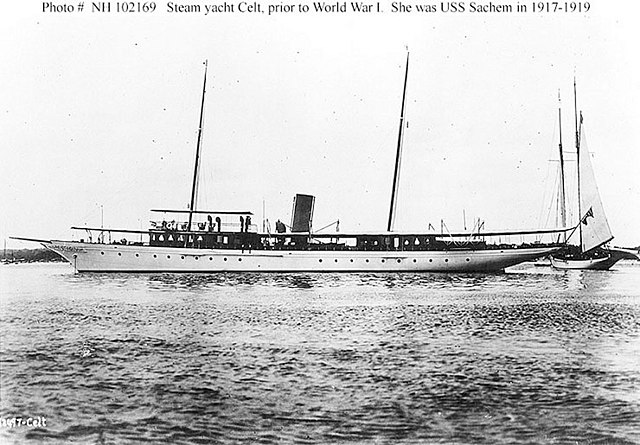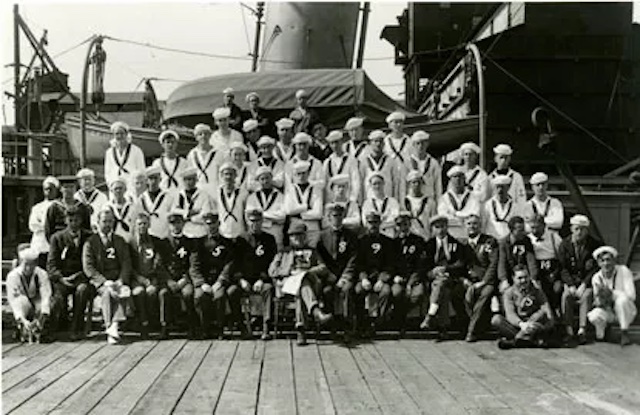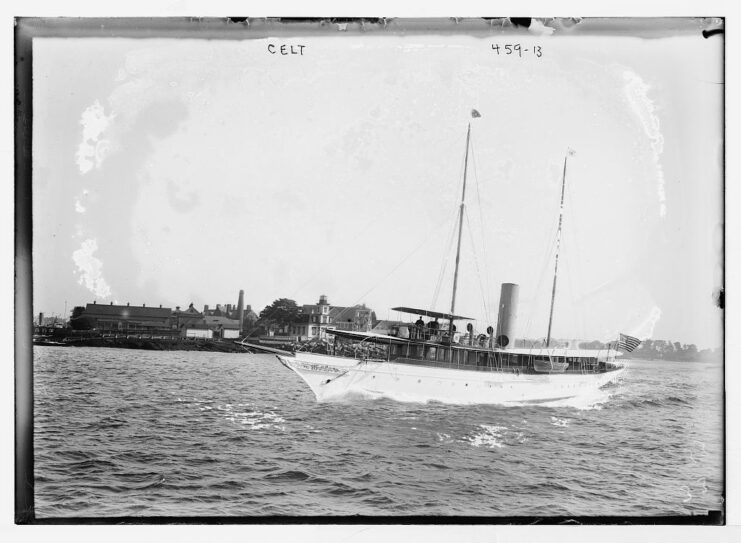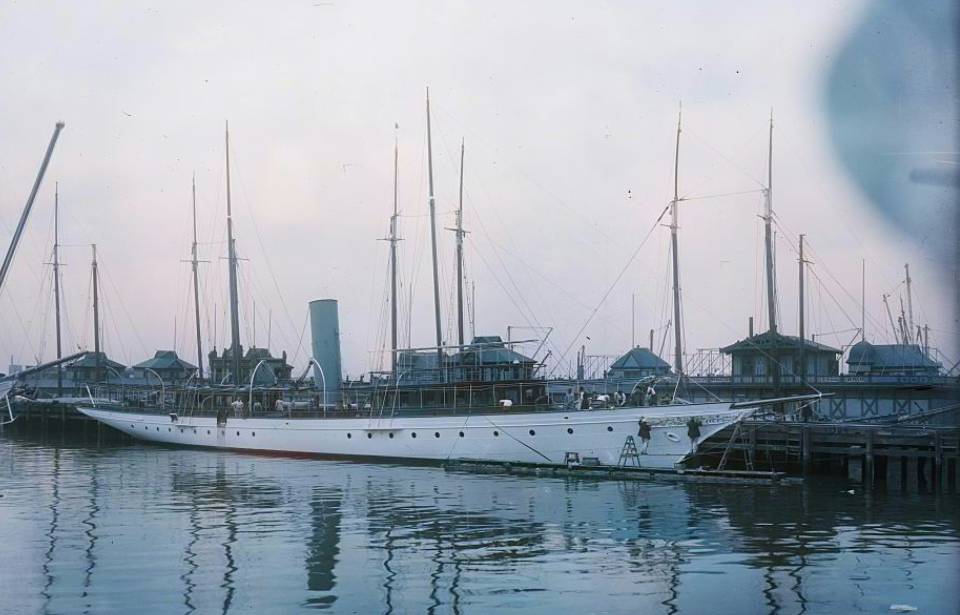Scattered across the United States, many abandoned ships fade into obscurity, yet few possess a history as captivating as that of the USS Sachem (SP-192), later known as the USS Phenakite (PYc-25), Celt, Sightseer, Circle Line V, and now, The Ghost Ship (a moniker with a touch of theatrical flair). This artifact from the early 20th century was twice commandeered by the US Navy, evolving from a lavish yacht into a battle-ready vessel.
From luxury steam yacht to US Navy patrol yacht

The USS Sachem‘s story begins in 1901, when the ship was ordered by railroad engineer J. Rogers Maxwell. Constructed by Pusey & Jones out of Wilmington, Delaware, the vessel, under the name Celt, was launched in April of the next year, and she served as a luxury steam yacht up until the United States entered the First World War.
With the outbreak of the conflict, the US Navy began looking for civilian ships to commandeer for coastal defense, as the Germans had begun attacking supply lines between America and Europe. Celt was one such vessel to be acquired for military service, being renamed Sachem.
USS Sachem (SP-192) during World War I

The USS Sachem subsequently underwent modifications, which saw her sides raised to allow her to become more seaworthy, the removal of her masts and the sealing of her ornate brass, the addition of navigational equipment and the fringing of the yacht’s portholes. A new complement of armament was also provided, to ensure she and her crew could fight against any enemy presence in the Atlantic. This featured:
- Depth charge racks
- One Ordnance QF Hotchkiss six-pounder deck gun
- Two QF three-pounder Hotchkiss deck guns
- Two light machine guns
Sachem served with the Third Maritime District during the early part of her naval service, patroling the East Coast, down to the Caribbean. In 1917, she was turned into a “floating laboratory” by famed inventor Thomas Edison, who conducted a number of experiments in his quest to develop effective U-boat countermeasures.
By the time the First World War came to an end, Sachem hadn’t experienced active combat, nor had she reported a confirmed sighting of an enemy submarine. For her and her crew’s service during the conflict, the yacht received the World War I Victory Medal.
Interwar period

In 1932, as the Great Depression tightened its hold on the country, Taylor sold the Sachem to Jacob Martin of Brooklyn, New York. Seeking to generate income during the economic downturn, Martin converted the yacht for dual purposes: deep-sea fishing and luxury passenger cruises, which proved to be a significant source of revenue.
Renamed the USS Phenakite (PYc-25) during World War II

Following the Japanese attack on Pearl Harbor in December 1941, the US Navy, again, began looking for civilian vessels to help in America’s defense. In February 1942, the service reacquired the USS Sachem for $65,000, transiting her to Robert Jacobs, Inc. in City Island, New York for modifications. These included new equipment; speed, armor and visibility upgrades; and a newer gray-haze paint scheme.
Just like in World War I, Sachem, by then re-designated the USS Phenakite, saw various types of armament installed on her deck. The weapons added this time around were:
- One three-inch/23-caliber deck gun
- One Thompson submachine gun
- Two Mark VI depth charge racks
- Four M2 Browning machine guns for anti-aircraft defense
Phenakite spent the first part of her renewed service with the Navy patrolling the East Coast, under the command of Lt. John D. Lennon. In late 1944, she underwent a refit, which saw her use widen to also include convoy escort and sonar system testing as part of the Fleet Sonar School Squadron and the Key West Squadron.
Similar to the earlier conflict, the yacht didn’t see active combat. That being said, her crew received both the World War II Victory Medal and the American Campaign Medal. Following the conflict, she was decommissioned and struck from the Naval Register.
Left abandoned in a Kentucky creek

Following World War II, Jacob Martin purchased the USS Phenakite back from the US Navy for $5,353. She was then sold to the Circle Line in New York City, serving as a tour boat under the name Circle Line V until 1983.
In 1986, Cincinnati, Ohio, resident Robert Miller purchased the yacht for $7,500. After a celebratory weekend in New York City over the July 4 long weekend, which saw the vessel make a cameo in the music video for Madonna‘s “Papa Don’t Preach,” Miller journeyed back to his home along the Ohio-Kentucky border. He subsequently moored the ship at the mouth of Taylor Creek, in Boone County, Kentucky, where she’s remained ever since.
Are you a fan of all things ships and submarines? If so, subscribe to our Daily Warships newsletter!
Unable to afford the upkeep of the yacht, Miller left her to rust away in the water. While on private property, what remains of the vessel has become a popular sight for kayakers and canoers traveling along Taylor Creek. Given her decrepit state, she has since been dubbed “The Ghost Ship.”
